Three Regional Summer Recipes in Spain
Friday, June 30, 2023
Spain, known for its vibrant culture and beautiful landscapes, also offers some of the most refreshing and delightful dishes during the sizzling summer months. In this article, we will explore three regional summer recipes sourced directly from authentic Spanish cookbooks, bringing you unique flavors and ingredients. Let’s dive into the delicious world of Spanish cuisine!
1. Gazpacho Andaluz (Andalusian Gazpacho)

Region: Andalusia
Gazpacho Andaluz is a cold, tomato-based soup perfect for those sweltering summer days. Laden with rich flavors and abundant nutrients, it’s a classic Spanish recipe that’s best made with fresh, ripe tomatoes.
Ingredients:
Instructions:
-
Wash the tomatoes, green bell pepper, and cucumber. Remove the stems from the tomatoes and seeds from the green bell pepper. Peel the cucumber.
-
Coarsely chop the tomatoes, green bell pepper, cucumber, and onion. Place them, along with the garlic clove, into a blender or food processor.
-
Soak the stale bread in cold water for a few minutes. Once softened, squeeze out the excess water and add it to the blender or food processor.
-
Blend the ingredients until smooth, adding some cold water if needed.
-
While blending, gradually add the extra virgin olive oil and sherry vinegar. Season with salt to taste.
-
Strain the soup through a sieve to remove any remaining solids.
-
Refrigerate for at least two hours before serving. Pour into bowls and add chopped tomato, cucumber, and bell pepper. Drizzle with extra virgin olive oil.
2. Esqueixada de Bacalao (Catalan Salt Cod Salad)
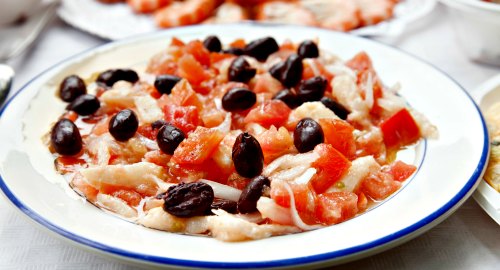
Region: Catalonia
Esqueixada de Bacalao is a traditional Catalan dish often consumed in summer. It's a simple and refreshing salad made with salt cod, tomatoes, onions, and bell peppers.
Ingredients:
Instructions:
-
The night before, start desalinating the cod. Soak it in a bowl of water for 24-48 hours, changing the water every 8-10 hours.
-
Once desalinated, tear the cod into small pieces with your hands.
-
Wash and cut the tomatoes and bell pepper into small pieces.
-
Peel and finely chop the onion.
-
Mix cod, tomatoes, onion, black olives and pepper in a bowl.
-
Dress the salad with olive oil, vinegar, and a pinch of salt. Stir everything to mix the flavors.
-
Allow it to chill in the refrigerator for at least 30 minutes before serving for the flavors to blend
3. Salpicón de Marisco (Seafood Salad)
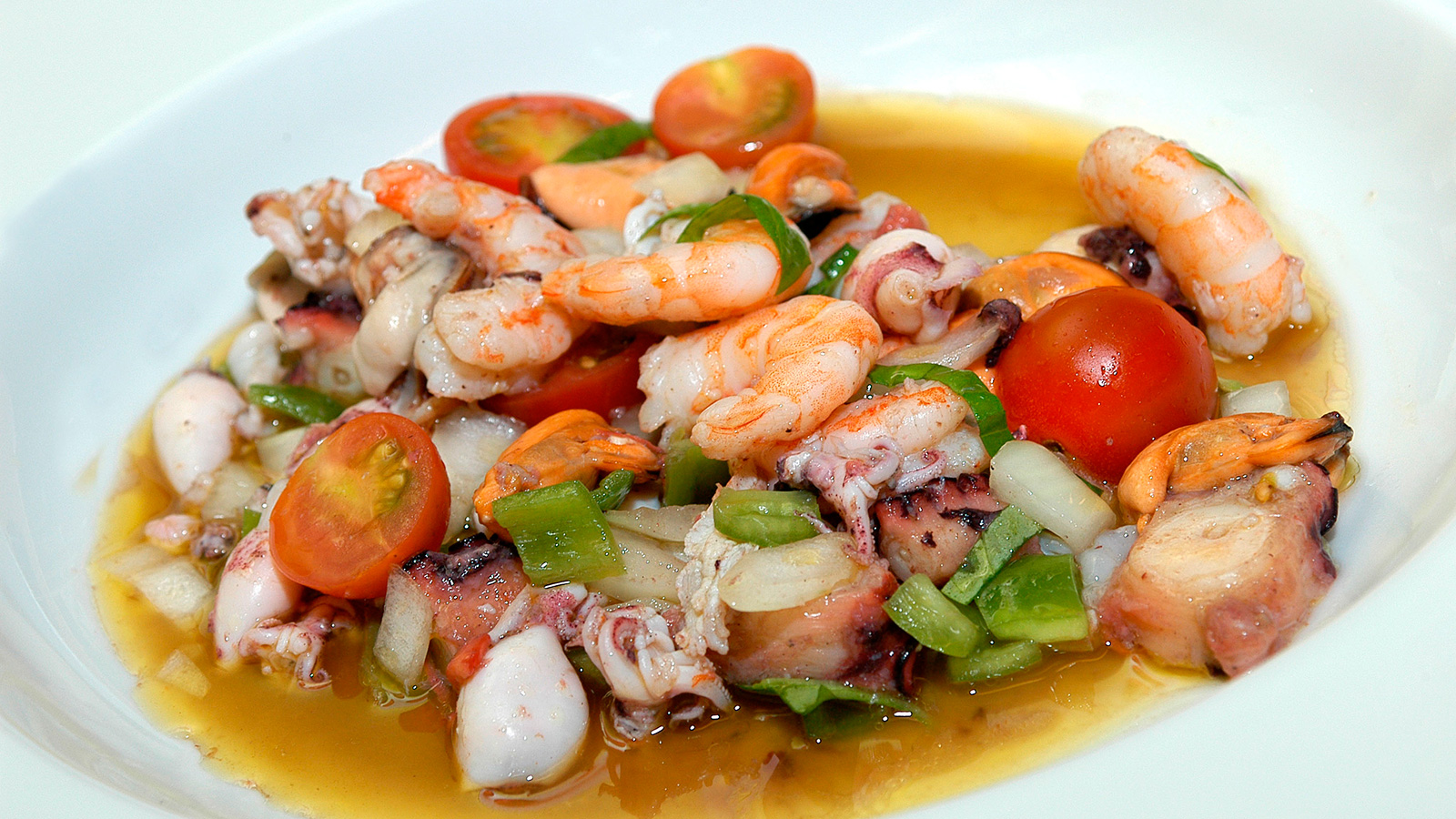
Region: Galicia
Salpicón de Marisco is a fresh combination of a variety of seafood, peppers, onions, and olives. It serves up an ideal appetizer or a light meal during the hot Spanish summer.
Ingredients:
-
500g mixed cooked seafood (shrimp, mussels, octopus)
-
1 green bell pepper
-
1 red bell pepper
-
1/2 onion
-
1/2 cucumber
-
100g pitted green olives
-
100ml extra virgin olive oil
-
3 tbsp white wine vinegar
-
Salt and pepper, to taste
-
Fresh parsley, for garnish
Instructions:
-
Rinse and drain the mixed cooked seafood. Cut into smaller pieces if needed. Remove shells from mussels.
-
Dice the green and red bell peppers, onion, and cucumber. Chop the pitted green olives.
-
In a large mixing bowl, combine seafood, diced vegetables, and olives.
-
In a separate small bowl, whisk together the extra virgin olive oil, white wine vinegar, salt, and pepper to make a simple vinaigrette.
-
Pour the vinaigrette over the seafood and vegetables, mixing well to combine.
-
Chill in the refrigerator for at least 1 hour before serving. Garnish with fresh parsley.
Enjoy these three incredible regional summer recipes from Spain and dive into the world of vibrantly rich flavors!
 1
Like
Published at 8:53 PM Comments (0)
1
Like
Published at 8:53 PM Comments (0)
The Life and Influence of Salvador Dali: A Surrealist Master
Friday, June 23, 2023
Salvador Dali, a prominent Spanish surrealist artist, was born on May 11, 1904, in Figueres, Spain. Dali's extraordinary talent and eccentric personality made him a leading figure in the world of art. His unique approach to art, combined with his technical skills, allowed him to create a wide range of works, from paintings and sculptures to fashion and film.
Early Life and Character
Born as Salvador Domingo Felipe Jacinto Dalí i Domènech, Marquis of Dalí de Púbol, Dali showed an early interest in art. His parents encouraged his artistic pursuits, enrolling him in drawing classes and providing him with art supplies. Dali's father, a respected notary, instilled a strong work ethic and discipline in his son, which would later contribute to his success as an artist.
Dali's character was a blend of eccentricity, flamboyance, and controversy. He was known for his iconic waxed mustache and bizarre fashion choices, often wearing a cape and carrying a walking stick. Dali's eccentricity extended to his personal life, where he would host elaborate parties and engage in unusual behavior, such as walking his pet ocelot on a leash. Despite his peculiarities, Dali possessed a keen intellect and a deep understanding of art history, which informed his artistic style and philosophy.
International Recognition
Salvador Dali's rise to international fame began in the late 1920s when he joined the Surrealist movement in Paris. Surrealism, an artistic and literary movement, sought to explore the irrational and subconscious mind, often using dreamlike imagery and unconventional techniques. Dali's paintings, such as "The Persistence of Memory" (1931), featuring melting clocks, and "Swans Reflecting Elephants" (1937), showcasing optical illusions, became iconic examples of Surrealist art.
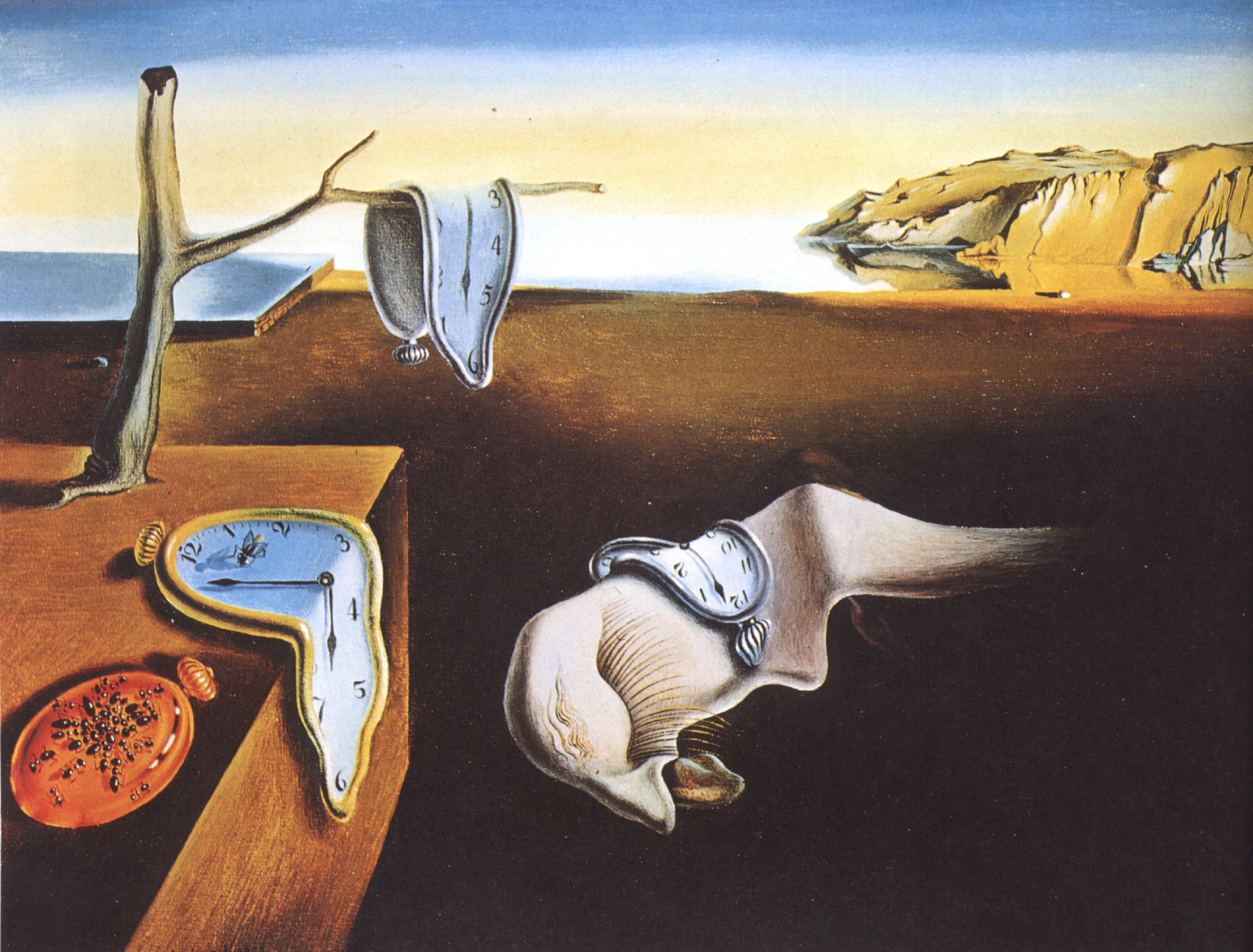

Dali's work was exhibited in major galleries and museums worldwide, solidifying his status as a leading figure in the art world. He also collaborated with other renowned artists and filmmakers, such as Luis Buñuel, with whom he co-wrote the groundbreaking surrealist film "Un Chien Andalou" (1929).
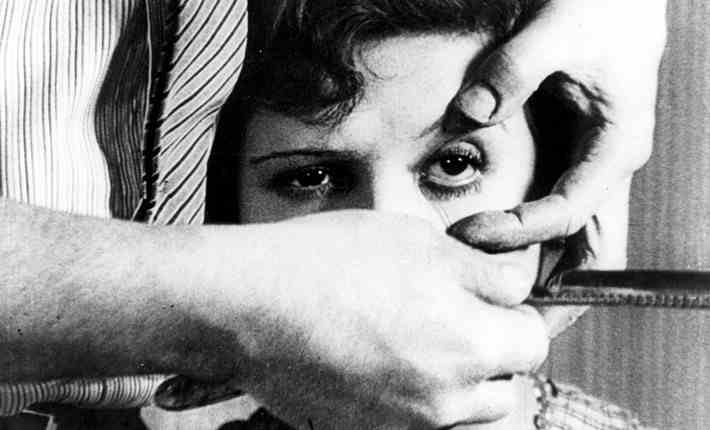
Artistic Influence
Salvador Dali's artistic influence extended beyond the realm of painting. He explored various artistic mediums, including sculpture, photography, and printmaking. Dali's sculptures, such as "Lobster Telephone" (1936) and "Mae West Lips Sofa" (1937), showcased his ability to transform everyday objects into surreal masterpieces.
Dali's influence also reached the world of fashion, collaborating with fashion designer Elsa Schiaparelli to create the iconic "Lobster Dress" (1937) and "Skeleton Dress" (1938). These collaborations blurred the lines between art and fashion, inspiring future designers like Alexander McQueen and Jean Paul Gaultier.
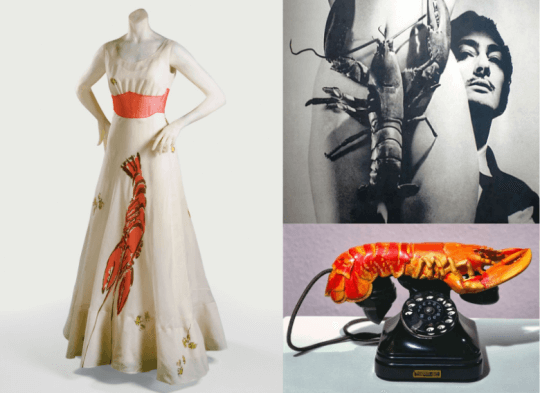
In addition to fashion, Dali ventured into theatre and film, designing sets and costumes for various productions. He worked with filmmaker Alfred Hitchcock to create the dream sequence in "Spellbound" (1945), showcasing his ability to bring surrealism to the big screen.
Impact on Different Sectors
Salvador Dali's influence can be seen across various sectors, from advertising and branding to architecture and design. His distinct visual style and surreal imagery have inspired countless artists, designers, and filmmakers. Dali's work has also been used in advertising campaigns for brands like Nissan and Perrier, demonstrating his enduring appeal and cultural relevance.
Salvador Dali's life and work have left an indelible mark on the world of art and beyond. His unique character, international recognition, and artistic influence continue to inspire and captivate audiences worldwide. Dali's legacy as a surrealist master endures, ensuring that his work will continue to intrigue and fascinate future generations.
 0
Like
Published at 9:16 AM Comments (0)
0
Like
Published at 9:16 AM Comments (0)
San Fermin - The Running of the Bulls
Friday, June 16, 2023
.jpg)
The Encierro is the event at the heart of the San Fermines and makes the fiesta a spectacle that would be unimaginable in any other place in the world. It was born from need: getting the bulls from outside the city into the bullring. The encierro takes place from July 7th to 14th and starts at the corral in Calle Santo Domingo when the clock on the church of San Cernin strikes eight o'clock in the morning. After the launching of two rockets, the bulls charge behind the runners for 825 metres, the distance between the corral and the bullring. The run usually lasts between three and four minutes although it has sometimes taken over ten minutes, especially if one of the bulls has been isolated from his companions. How to see the bull run.
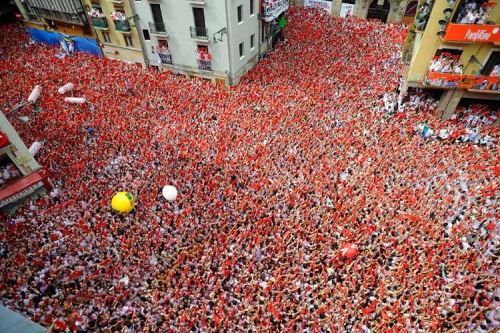
The bull run has a particularly emotional prelude. It is when the runners, just a few metres up the slope from the corral where the bulls are waiting, raise their rolled newspapers and chant to an image of San Fermín placed in a small recess in the wall in the Cuesta de Santo Domingo. Against the strongest of silences, the following words can be heard: "A San Fermín pedimos, por ser nuestro patrón, nos guíe en el encierro dándonos su bendición. Entzun arren San Fermin zu zaitugu patroi zuzendu gure oinak entzierro hontan otoi." (We ask San Fermín, being our patron saint, to guide us in the bull run and give us his blessing). When they finish they shout "¡Viva San Fermín! ¡Gora San Fermín!." This chant is sung three times before 8 a.m.: first, when there are five minutes to go before 8 o'clock, then three minutes and one minute before the gate of the corral is opened.
.jpg)
The third rocket, fired from the bullring, signals that all the bulls have entered the bullring. A fourth and final rocket indicates that all the bulls are safely in the corral located inside the bullring, and that the bull run has ended.
For security reasons, a double fence marks out the route of the bull run through the streets. It is made of over 3,000 wooden parts (planks, posts, gates, etc.). Part of the fence stays put throughout the fiesta but other sections are assembled and disassembled every day by a special brigade of workers.
A large number of pastores (bull 'shepherds') cover the entire bull run. They place themselves behind the bulls, with their only protection being a long stick. Their main role is to stop the odd idiot from inciting the bulls from behind, to avoid the bulls turning round and running backwards, and to help any bulls that have stopped or have been separated from their companions to continue running towards the bullring.
Other key people in the bull run are the dobladores, people with good bullfighting knowledge (sometimes ex-bullfighters) who take up position in the bullring with capes to help the runners 'fan out' (in other words, run to the sides after they enter the bullring) and 'drag' the bulls towards the corral as quickly as possible.
The six fighting bulls that will take part in the evening bullfight start the run accompanied by an initial group of mansos, which act as 'guides' to help the bulls cover the route. Two minutes after leaving the corral in Santo Domingo, a second group of bullocks (the so-called 'sweep-up" group), which are slower and smaller than the first one, are let out to lead any bulls that might have stopped or been left behind in the bull run towards the bullring.
The encierro is an unrepeatable experience for spectators and runners alike. It is a spectacle that is defined by the level of risk and the physical ability of the runners.
An inexperienced runner should learn about the characteristics of this dangerous 'race' (although it should not be considered as a race) before starting, and also about the protective measures to be taken for his/her own safety and that of the people running alongside.
Not everyone can run the encierro. It requires cool nerves, quick reflexes and a good level of physical fitness. Anyone who does not have these three should not take part; it is a highly risky enterprise.
Runners should start somewhere between the Plaza del Ayuntamiento (City Hall Square) and the pink-slab Education building in the Cuesta of Santo Domingo, and they should be there before 7.30 a.m. because entry to the run is closed from that time on. The rest of the run, except for the stretch mentioned above, must be completely clear of runners until a few minutes before 8 a.m.
What is not allowed in the bull run :
People under 18 years of age, who must not run or participate.
Crossing police barriers placed to ensure that the run goes off smoothly.
Standing in areas and places along the route that have been expressly prohibited by the municipal police force.
Before the bulls are released, waiting in corners, blind spots, doorways or in entrances to other establishments located along the run.
Leaving doors of shops or entrances to apartments open along the route.
The responsibility for ensuring these doors are closed lies with the owners or tenants of the properties.
Being in the bull run while drunk, under the effects of drugs or in any other improper manner.
Carrying objects that are unsuitable for the run to take place correctly.
Wearing inappropriate clothes or footwear for the run. Inciting the bulls or attracting their attention in any manner, and for whatever reason, along the route of the run or in the bullring.
Running backwards towards the bulls or running behind them.
Holding, harassing or maltreating the bulls and stopping them from moving or being led to the pens in the bullring.
Stopping along the run and staying on the fence, barriers or in doorways in such a way that the run or the safety of other runners is jeopardised.
Taking photographs inside the run, or from the fences or barriers without due authorisation.
Carrying objects that are unsuitable for the good order and security of the bull run.
Installing elements that invade horizontal, vertical or aerial space along the bull run, unless expressly authorised by the Mayor's Office.
Any other action that could hamper the bull run taking place normally.
Ver mapa más grande
BEST TIME TO VISIT : 6 JULY TO 14 JULY
 0
Like
Published at 8:02 PM Comments (13)
0
Like
Published at 8:02 PM Comments (13)
$736,000 for One Fish - Spain's Maritime Treasure
Wednesday, June 7, 2023
If we were to name an iconic species of the Mediterranean sea and the straight of Gibralter, it would no doubt be the Atlantic bluefin tuna. Strangely, not many people know about this amazing animal, which is one of the biggest and one of the most commercially valuable fish in the world. Precisely for this, it has been heavily overfished for decades and the victim of widespread pirate fishing especially in its main spawning grounds across the Mediterranean.
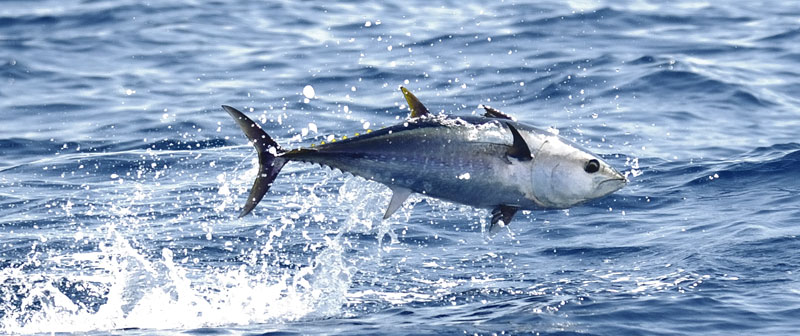
Adults are typically 2 metres long but can reach over 4 metres, making the Atlantic tuna one of the largest bony fishes and the largest of all the tuna species. Adults average around 250kg, but the largest recorded specimen was a massive 679 kg - that’s heavier than a horse!
How fast can tuna swim? You`ll usually find them cruising around at 2.8-7.4km per hour, but can swim double that, nearly 15km per hour, for some time. But it’s when they’re chasing their prey or avoiding a hungry shark that they really let fly, accelerating faster than a Porsche and reaching speeds of 70, and maybe even 100 km per hour! No surprise then that the word tuna comes from a Greek word meaning “to rush”.
Atlantic bluefin tuna are not just fast sprinters they are also champion long-distance swimmers. These fish are found on both sides of the North Atlantic Ocean, from Brazil to Newfoundland in the west and West Africa to Norway in the east. Throughout their lives they roam this vast area searching for prey, returning each year to their spawning grounds in either the Gulf of Mexico or the Mediterranean Sea. These travels include trans-Atlantic crossings, which a bluefin can complete in less than 60 days. Up to 30% of the total population makes this voyage, with some individuals even making multiple crossings in a single year.
You probably learnt at school that fish are cold-blooded. That’s mostly true - but not for bluefin tuna. Their specialized circulation system allows them to retain up to 95% of the heat generated by their muscles. This means they can keep themselves much warmer than the surrounding water - essentially making them a warm-blooded fish!
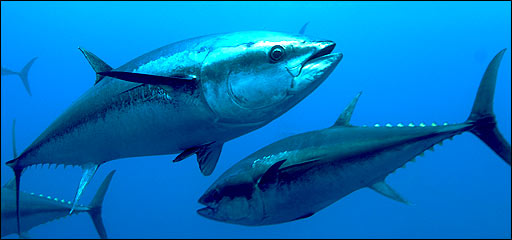
Atlantic bluefin tuna must literally swim for their life. Their rigid head helps them to swim fast, but doesn’t allow them to pump water over their gills like some other fish. Instead, water is forced over their gills as they swim with their mouths open. But this means they need to keep swimming - like some sharks, if they stop they will die.
Tuna are fearsome predators from the moment they hatch. They hunt by sight, and have the sharpest vision of any bony fish. Adult Atlantic bluefin tuna eat schooling fish like herring, mackerel, flying fish, and anchovies, as well as squid, eels, and crustaceans and occasionally starfish and even kelp. They can dive down to around 1,000m to find food.
Atlantic bluefin tuna larvae have only a 1 in 40 million chance of reaching adulthood. But the lucky few are amongst the ocean’s top predators. They can expect to live for at least 15 years, and even as long as 30. They’re not quite at the top of the food chain though. Their fast speed allows them to escape most predators except for large sharks, toothed whales like killer whales and pilot whales… and humans.
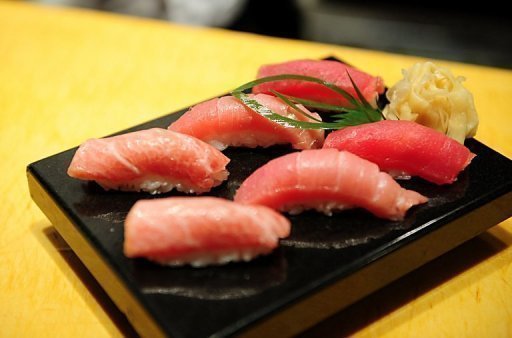 Atlantic bluefin tuna has long been valued in the Mediterranean, where it provided food for numerous civilizations and created wealth. This is in stark contrast to North America, where prior to the 1960s it could only be sold for pet food! Atlantic bluefin tuna has long been valued in the Mediterranean, where it provided food for numerous civilizations and created wealth. This is in stark contrast to North America, where prior to the 1960s it could only be sold for pet food!
But in the 1960s, international markets for canned and fresh tuna arose following the development of longlines, purse seines, and freezing equipment that allowed frozen tuna to be shipped long distances. Soon, large numbers of commercial purse seiners were catching Atlantic bluefin tuna for canning.
By the 1970s, attention switched to giant bluefin tuna for the Japanese market, where the bluefin had become a highly sought-after delicacy for sushi and sashimi.
Longliners, harpooners, and purse seiners all targeted the giants, driven by the high prices paid in Japan - which consumes 40% of global bluefin landings and where a single bluefin has sold for over $ US 736,000! These fleets have used ever-more sophisticated means to find the tuna, including spotter planes and sonar equipment.
In the late 1990s came a new development in the bluefin tuna industry: tuna farms, which could be the final nail in the coffin for the endangered eastern population.
The farms are actually fattening pens for live-caught bluefin tuna, and supply a new market in Japan for cheaper bluefin tuna for sushi and sashimi. Suddenly, the prized bluefin was affordable for nearly all Japanese, not just the wealthy. Demand soared...and so did the fishing effort.
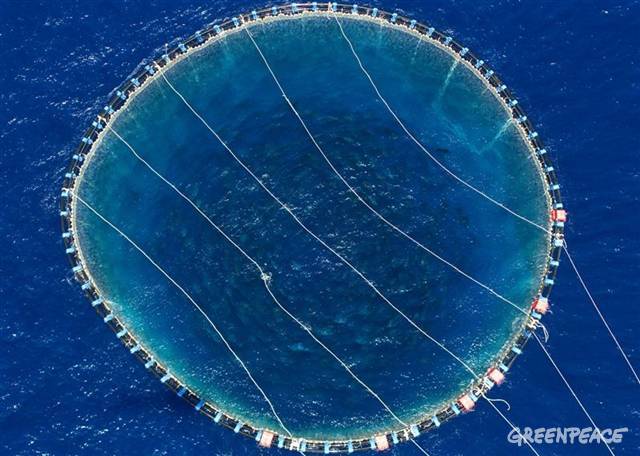
The practice of transferring live tuna at sea to tug boats for transportation to the farms makes it extremely difficult to keep track of how many tuna were transferred, and what size they were.
Japan, which imports most of the bluefin tuna captured in the Mediterranean, has strict rules prohibiting IUU fish from entering the country. However, China and other Southeast Asian countries are less strict. Their ports would likely accept illegally caught bluefin tuna from the Mediterranean.
 1
Like
Published at 10:56 AM Comments (0)
1
Like
Published at 10:56 AM Comments (0)
The Sanctuary of Torrecuidad
Friday, June 2, 2023
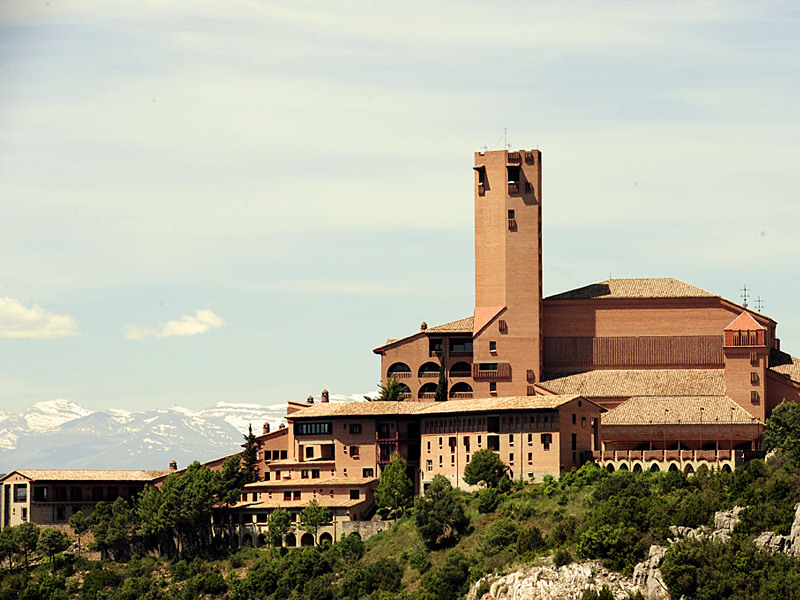
On the top of a rocky ridge in near the town of Barbastro, in the Huesca province is a small shrine dedicated to the Virgin of Torreciudad, a “Black Madonna.”
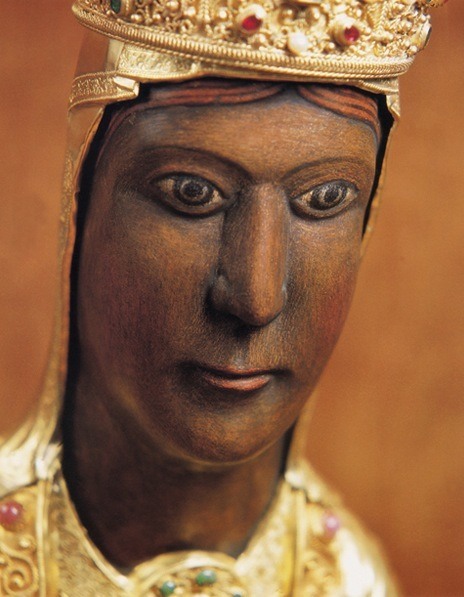 Black Madonna’s are images of the Virgin Mary depicted with dark skin. Created in medieval Europe, the origin of the black Madonna are unknown though some scholars believe that the dark skin represents a blending with pre-Christian female icons. Relatively rare, with roughly 350-400 throughout Europe, they are seen as special and given particular reverance. Black Madonna’s are images of the Virgin Mary depicted with dark skin. Created in medieval Europe, the origin of the black Madonna are unknown though some scholars believe that the dark skin represents a blending with pre-Christian female icons. Relatively rare, with roughly 350-400 throughout Europe, they are seen as special and given particular reverance.
In 1904, a very ill two year old named Josemaria Escriva de Balaguer was taken by his parents to this Black Madonna mountain shrine to be healed. The young Josemaria Escriva de Balaguer not just recovered but would go on to found Opus Dei in 1928, which teaches that ordinary life is a path to sanctity, and everyone can be holy. Opus Deibecame a huge movement within the church and Escrivá was sainted in 2002.
(Opus Dei is also a very controversial movement within the Catholic Church, particularly for its use of mortification of the flesh, such as the use of a cilice — a small metal band with inward pointing spikes worn around the upper thigh. Josemaria Escriva himself felt pain - both spiritual and physical - was holy, saying “Loved be pain. Sanctified be pain. Glorified be pain!” Opus Dei got thrust into the spotlight when it was featured in Dan Brown’s factually ridiculous book the Da Vinci Code.)
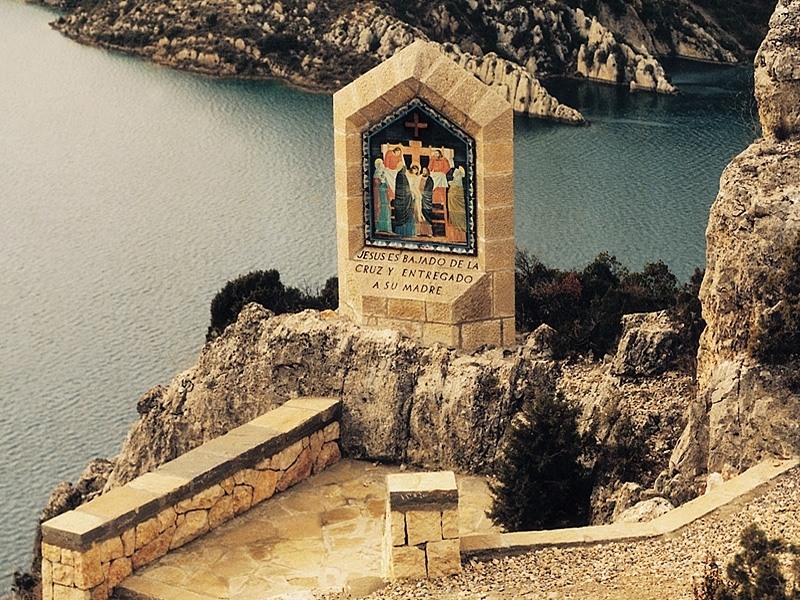
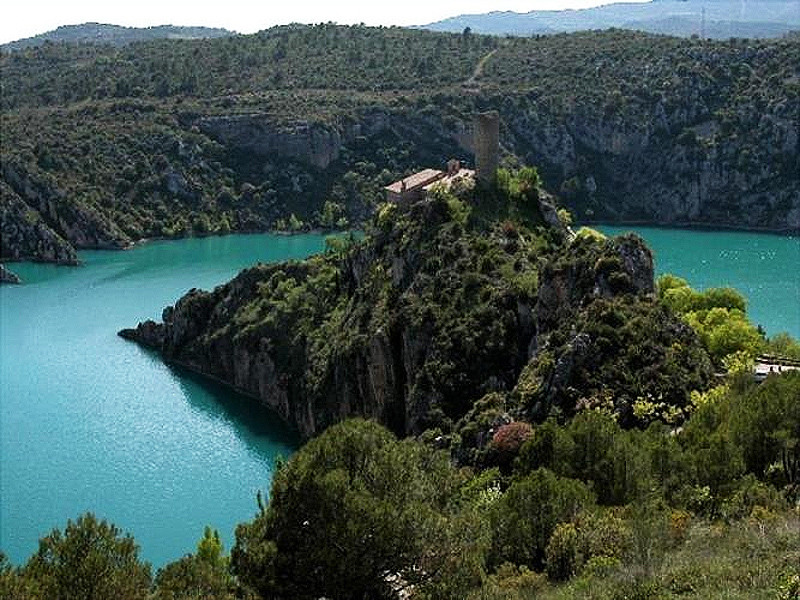
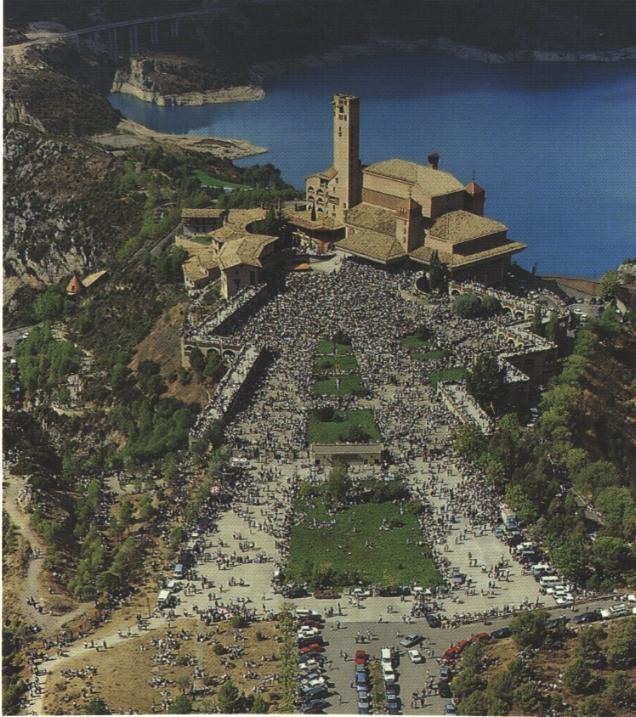
Nearly seventy years after his recovery at the shrine, Josemaria Escriva decided to build a monument to God near the shrine that saved his life. Called the Santuary of Torreciudad, it was inaugurated on 7 July 1975, shortly after Josemaría Escrivá’s death.
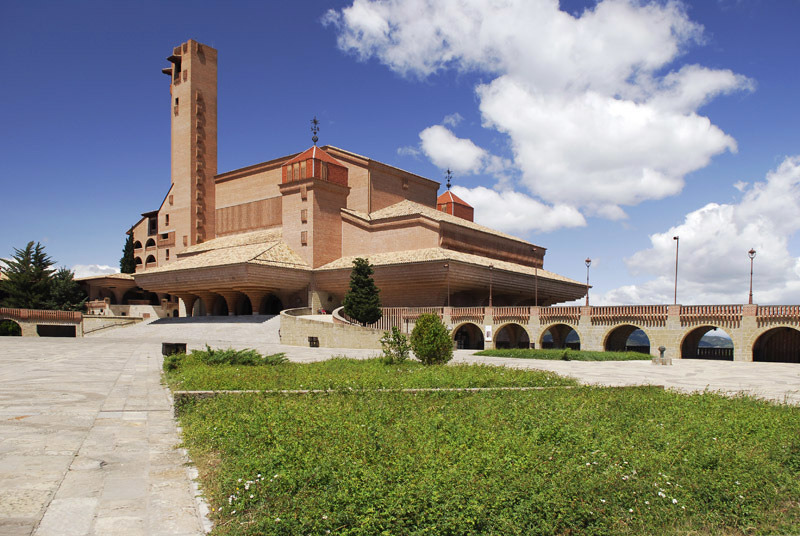
The sanctuary done in a 1970s architectural style holds a crypt, a 30 foot alter, and a large bronze Christ. The chapel contains an old inn, which is also open to the public. The church is also the site of major pilgrimage between April and October.
 1
Like
Published at 10:37 PM Comments (0)
1
Like
Published at 10:37 PM Comments (0)
Spam post or Abuse? Please let us know
|
|